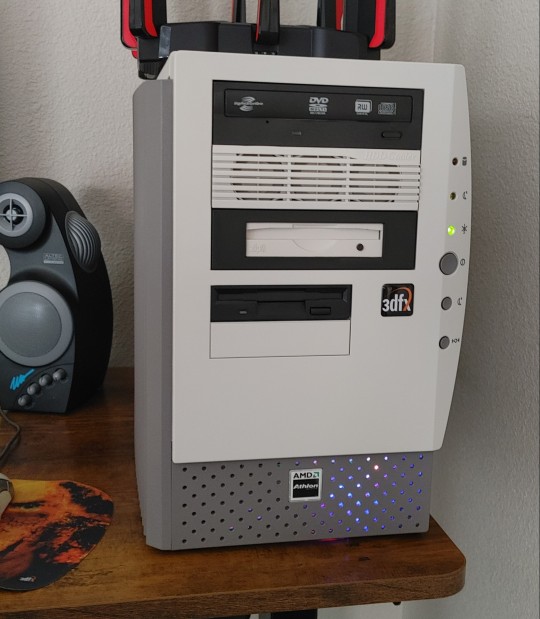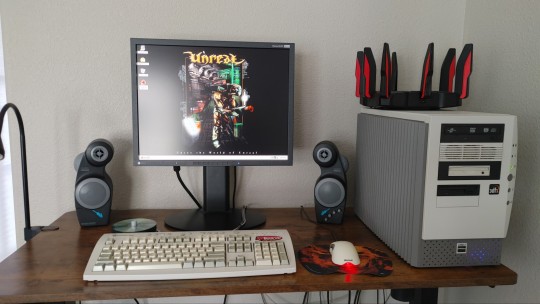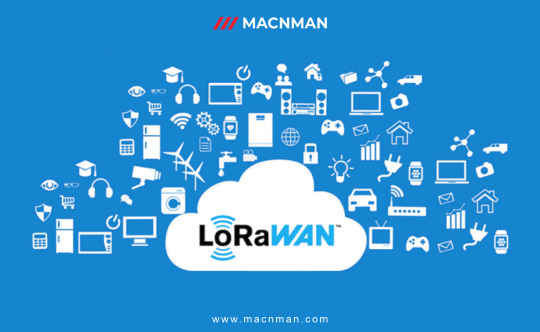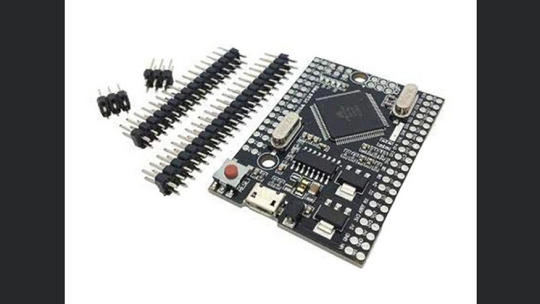#MHz Choice
Text
FYI, American and Canadian Amazon users: seasons 1 - 4 of Babylon Berlin are on MHz Choice, and you can sign up for a 2-month trial for $.99/month through the Amazon Video app (like below) until July 17! Act now fast! 🍸

2 notes
·
View notes
Video
youtube
Captain Marleau: First Look (Season 4)
2 notes
·
View notes
Note
Wait. You really don't know anything about it.
I suggest you block the tags then because you're gonna catch A LOT of spoilers especially tomorrow 💀
LMFAO. YEAH. NO I'VE ONLY SEEN THE FIRST 2 EPISODES. i'm not even going to bother blocking the tags probably 80% of it is going to be in italian anyways and i probably won't stop to read like half of it 😭not really worried about spoilers anyway if anything i think it makes the silly little show more intriguing to see what's goin on
also if simone is going to be anymore like me when i was still going by Simon and like men i have to be there for my comrade.
#also cant go watch the 2nd season lmfao mhz choice only has the first one and even then the last 2 episodes don't unlock until tomorrow#it was almost half locked when i first started and then i forgot to keep watching#ask#omarfor-orchestra
3 notes
·
View notes
Note
Hey! Just saw that season 6 of gåsmamman is on the drive folder, will there be subtitles added in the future?
with season 6 the subtitles are already included in the videos so no need to add them separately.
also i would recommend watching through that other drive that's been floating around because they have all the episodes with subs on the videos which makes it way easier to watch.
here's the link
the creators' twitter accounts 1 & 2
#when i started this i had just downloaded the seasons from different google drives i found on twitter#but because i only saved them for myself at first i didn't bother with crediting the op#and then when i compiled everything i couldn't anymore#but with s6 i know where the subs come from#and they put a lot of work into it#so i didn't wanna make an announcement because i mainly added s6 onto my drive for myself#so i would urge everyone starting the show#to use their drive instead of mine#it's way easier#also they used the official amazon prime/mhz choice subs for s1-3#so it's way better#damn i already miss this show#gåsmamman#gåsmamman ask#edvin ryding
8 notes
·
View notes
Text



Looking sharp after a few upgrades:
Pentium II 450 -> Athlon 800 MHz
Asus P2B -> Gateway Select "Kadoka" (capacitor-less!) - not my first choice for a Slot A MoBo, but the cool guy I bought the CPU from threw it in for free! Main downside is I lost my ISA slots, so...
Soundblaster AWE 64 ISA -> Soundblaster Live! 5.1 PCI - fortunately found some great DOS drivers from Philscomputerlab and everything runs and sounds great
My beige Pioneer 16X Slot DVD-ROM bit the dust, so swapped out to an old Lite-On IDE black DVD-RW drive I had lying around in spare parts
Switched the 5.25" bay adapter and the floppy drive to black to match. Think I like this black + beige scheme vs. the mismatched various shades of beige I had with the previous components
Hope to get a VGA video capture device soon so I can start recording / posting some videos here...
#Pc gaming#Computer gaming#Dos games#ms dos games#Windows 98#Windows 95#Athlon#Pentium ii#Soundblaster#3dfx#Pc games#Computer games#Altec lansing
57 notes
·
View notes
Text
Every word of this article feels like a stroke
#what do you mean they also bought makari imma tataranni and montalbano#I'm scared I'm so scared#mare fuotag
11 notes
·
View notes
Text
Arduino Due vs. Mega: A Comprehensive Comparison
What is Arduino Due and Mega?
The Arduino platform has revolutionized the world of DIY electronics, providing hobbyists and professionals alike with versatile and powerful microcontroller boards. Among the myriad of options, the Arduino Due and Arduino Mega stand out for their advanced features and robust performance. The Arduino Due, introduced in 2012, is the first Arduino board based on a 32-bit ARM core microcontroller, the Atmel SAM3X8E. In contrast, the Arduino Mega, built around the 8-bit ATmega2560 microcontroller, is known for its abundant I/O pins and memory. Understanding the differences between these two boards can help in selecting the right one for specific projects, enhancing both functionality and efficiency.
Processing Power and Performance
The processing capabilities of the Arduino Due and Mega are distinctly different, primarily due to their core microcontrollers. The Arduino Due, with its 32-bit ARM Cortex-M3 processor running at 84 MHz, offers significantly higher processing power compared to the Arduino Mega's 8-bit ATmega2560, which operates at 16 MHz. This difference in architecture and clock speed means that the Due can handle more complex calculations and tasks faster and more efficiently than the Mega. For projects requiring high computational power, such as real-time data processing or handling multiple sensors simultaneously, the Due is the superior choice. However, for simpler tasks, the Mega's processing power may suffice.
Memory and Storage Capabilities
Memory is another critical aspect where the Arduino Due and Mega diverge. The Arduino Due is equipped with 512 KB of flash memory for code storage and 96 KB of SRAM for data. On the other hand, the Arduino Mega has 256 KB of flash memory and 8 KB of SRAM. Additionally, the Due features a Direct Memory Access (DMA) controller, which allows for efficient memory operations, freeing up the CPU to handle other tasks. These memory enhancements make the Due more suitable for applications requiring large codebases and significant data handling, such as advanced robotics or sophisticated control systems. The Mega, with its more modest memory, is ideal for less demanding applications.
Input/Output Capabilities and Expansion
Both the Arduino Due and Mega are renowned for their extensive input/output (I/O) capabilities, yet they cater to different needs. The Mega boasts a whopping 54 digital I/O pins, 16 analog inputs, and 4 UARTs, making it ideal for projects that require multiple sensors, actuators, or communication interfaces. The Due, while offering fewer digital I/O pins at 54, includes 12 analog inputs and 4 UARTs, along with additional features like two DAC outputs for analog signal generation and enhanced PWM capabilities. These features provide the Due with superior analog output capabilities, making it suitable for applications like audio processing or advanced signal generation.
Power Consumption and Compatibility
Power consumption and compatibility are practical considerations when choosing between the Arduino Due and Mega. The Due operates at 3.3V logic levels, which makes it more power-efficient than the Mega, which uses 5V logic levels. This lower voltage operation is beneficial for battery-powered projects where energy efficiency is crucial. However, the 3.3V logic also means that the Due is not directly compatible with 5V components without level shifters. The Mega, with its 5V logic, offers broader compatibility with existing Arduino shields and components, making it a versatile choice for a wide range of projects. Understanding these power and compatibility nuances can help in making an informed decision based on the project's specific requirements.
2 notes
·
View notes
Text
What is the difference between LoRa and LoRaWAN?
Introduction:
LoRaWAN serves as the communication protocol connecting the LoRa signal (which carries sensor data) to the respective application(s). To simplify, think of LoRa as the radio signal transporting the data, while LoRaWAN acts as the governing framework that dictates how this data travels and communicates within the network.

What is LoRa?
LoRa, short for Long Range, is a wireless technology known for its extended range and energy-efficient characteristics. It operates within unlicensed wireless frequencies, similar to how Wi-Fi utilizes the unregulated 2.4 GHz and 5 GHz bands. The specific frequency employed by LoRa varies depending on the geographic location of the deployment. For instance, in North America, LoRa operates in the 915 MHz band, while in Europe, it utilizes the 868 MHz band and in India it is 865 MHz to 867 MHz.
It is crucial to be aware of the legally permitted frequencies for LoRa deployments in each respective location. In terms of its communication range, LoRa can transmit data up to a distance of 10 kilometers in ideal conditions with a clear line of sight.
Low Power Wide Area (LPWA) technology can be categorized into two main types. On one hand, there's cellular LPWA, which utilizes mobile networks. Examples of cellular LPWA technologies include Narrowband IoT (NB-IoT) and Long Term Machine Type Communications (LTE-M). On the other hand, there's non-cellular LPWA like LoRa, which disseminates data by dividing it into encoded packets and transmitting them across various frequency channels and data rates.
What is LoRaWAN?
LoRaWAN is a network protocol that serves as the bridge between the LoRa signal, which carries sensor data, and the applications that use this data. In simpler terms, LoRa represents the radio signal responsible for transmitting the data, while LoRaWAN is the communication protocol that manages and defines how this data is transmitted across the network.
LoRaWAN offers several valuable advantages, including low power consumption, extensive coverage range, and cost-effective connectivity for devices that don't require high data transfer speeds. It's an excellent choice when cellular connectivity is too expensive or Wi-Fi coverage is unavailable. Some of the most compelling use cases for LoRaWAN include:
Agriculture: LoRaWAN's long-range capabilities provide reliable connectivity for rural applications where high data transfer rates are not necessary, making it ideal for agricultural applications. LoRaWAN sensors for agriculture are used for cattle management, soli monitoring, and temperature monitoring.
Asset Tracking and Logistics: LoRaWAN supports cost-effective location tracking of assets, with optimized battery life, making it a practical choice for asset management and logistics.
Smart Metering: LoRaWAN's sensors have the ability to reach even in underground utility locations makes it a suitable choice for smart metering applications.
Smart Homes: LoRaWAN can penetrate obstacles like walls and supports battery-powered devices with low data consumption, making it an attractive connectivity option for smart home applications.LoRaWAN sensors for smart homes are used for Air quality monitoring, water quality monitoring, and temperature & humidity monitoring.
Healthcare: The low power consumption, affordability, and reliability of LoRa technology make it suitable for connected health applications. IoT solutions based on LoRa hardware can monitor high-risk patients or systems around the clock, ensuring comprehensive health and medical safety management.LoRaWAN Gateways and sensors enhance production practices, enable efficient tracking and monitoring of shipments, and facilitate the development of cutting-edge medications.
Industrial Applications: LoRa-enabled devices and sensors play a crucial role in the transformation of industrial IoT operations like mentioned above. They digitize legacy processes and equipment, leading to increased profits, lower costs, and enhanced efficiency. These devices provide real-time data for predictive maintenance, machine health monitoring, reduced downtime, and more.
3 notes
·
View notes
Note
hey, if you don't mind my asking, how did you watch a dangerous fortune? I've been looking everywhere I know, and it doesn't seem to exist on the internet :/
I don't mind at all! In terms of streaming, ADF is currently only available through MHz Choice, but I think you need a subscription for it. HOWEVER, I watched it by downloading it from this Luca Marinelli collection here. It comes with subtitles and it's in two parts. Hope that helps <3
3 notes
·
View notes
Text
"My wish to myself and to the world is: be narcissus": Giacomo Giorgio, the man behind The Sea Beyond's Ciro Ricci.
Giacomo Giorgio doesn’t need an introduction. We could list the theatre and film projects that saw him at work before his fame arrived playing the role of Ciro Ricci in the teen-cult series The Sea Beyond now available on MHz Choice (including The Happy Prince under the direction of Rupert Everett and alongside Colin Firth and Colin Morgan) or those after, but the career of Giacomo Giorgio, allow…

View On WordPress
4 notes
·
View notes
Text
Polpette di Finocchietto
Polpette di Finocchietto
wild fennel fritters with pecorino
INGREDIENTS
6c. wild fennel fronds, picked from stems, boiled, squeeze-dried
1 large red onion, finely diced
2 eggs
3/4c. breadcrumbs
1/2c. grated pecorino cheese
1/4c. small dried raisins or currants
pinch of peperoncino
1T wild fennel seeds
sea salt and black pepper to taste
3c. vegetable oil to deep fry
PROCESS
Prepping the wild fennel is the most time consuming part of this recipe. Pick the soft fronds for the polpette, and discard the thick tough stems. Wash the greens thoroughly in a salad spinner then blanch in boiling salted water for about 15 minutes until softened. Squeeze all of the water from the wild fennel, blot on paper towels, or place it again into the salad spinner to remove as much moisture as possible. In a small food processor or with a chefs knife, chop the fennel greens finely and place in a large mixing bowl. Add the diced red onion, two eggs, parmigiano cheese, raisins and wild fennel seeds. Season with a pinch of peperoncino red chili flakes, sea salt and black pepper. Mix to combine and add the breadcrumbs as needed to hold it all together. You should be able to form small “meatballs” that are not too sticky but will hold their shape. Continue making your polpettine with the remaining mix.
In a wide sauce pan, heat at least 2-inches of vegetable oil over medium heat. There must be enough oil to deep fry. It will actually help keep them from becoming greasy if you use more oil and allow the food to float. When a small test piece sizzles in the oil, we are ready to fry!
Carefully place enough polpettine into the hot oil so they can float around without being too crowded. This recipe will make about 30 small balls and depending on the size of your pan you can probably fry 10 at at time. When they become a darker shade of green and you can tell by touching them with a metal spider tool that there is a crisp shell, they can be removed. Let the oil drain off over the pan before moving them to a paper-lined tray to blot off and absorb the additional oil. Continue with the next batch and let the polpettine cool slightly on the paper.
Notes from the Chef:
Finocchietto selvatico has a particular savory, earthy, anise or licorice-like flavor that screams “Sicily”. It’s found growing along the side of the road all over the Sicilian countryside during winter and springtime. Wild fennel is most commonly used in the “pasta con le sarde” dish with saffron and sardines. Fennel and wild fennel are different plants, although they come from the same family. Fennel is the more common white bulb that is served raw in salads while the wild fennel is a bright green flowering Mediterranean plant with fluffy fronds, similar to the little sprouts you usually see growing out of the top of a fennel bulb.
So, we all know that everyone loves a meatball! Polpette — or small polpettine in this case, are perfect bite-sized snacks to serve when you have friends coming over and need a little something to nosh on. They are always a hit with the kids as well! Try this simple vegetarian recipe for wild fennel meatballs or feel free to substitute any leafy green like Tuscan kale, frozen spinach or chopped swiss chard if wild fennel greens are not available.
Like most meatballs, there needs to be something added to the mix that will help hold them together. We are using breadcrumbs, grated cheese, and egg to bind them. It could even be made gluten-free with rice/cornflour breadcrumbs. Like many traditional Sicilian recipes, we’re playing with sweet and savory flavors here. The addition of the dried raisins helps to balance the savory and salty notes of the fennel and parmigiano. With a little dash of freshly grated pecorino on top, you’ll have that snowy feeling even if the sun is still shining wherever you may be this winter.
Read the original recipe on MHz Choice network’s website. Photos by Alberta Cuccia. ©2019 MHz Networks and Linda Sarris. All rights reserved. Intended for personal use only. Any unauthorized duplication, distribution or reproduction punishable by law.
8 notes
·
View notes
Text
Babylon Berlin gets a new home in the US after Netflix unceremoniously dropped it on Feb 28 and Season 4 will stream in America, finally!! Premieres June 25. By the way, MHz Choice has been around for a while and offer a wide selection of international tv (including Tatort, Germany’s longest running crime show by a million miles).
4 notes
·
View notes
Text
#Agatha Christie's Hjerson#David Fukamachi Regnfors#Hanna Alström#Jimmy Lindström#Johan Reborg#Jonna Järnefelt#Maja Söderström#Maria Lundqvist#Saga Samuelsson#MHz Choice#Patrik Gyllström#Ariadne Oliver#Agatha Christie
0 notes
Text
when did mhz choice get un professore. ok fine ill watch a bit of another alessandro gassmann show
#<- vibrating btw i need to actually start consuming more media in italian#listening to the same ultimo songs on loop does not do as much as i want it to#once again nothing more powerful than vague posting on my dashboard once a week#un profeblogging
4 notes
·
View notes
Text
Arduino-Compatible Boards: Mega 2560 Pro, LilyPad, and Nano
Arduino is a popular open-source hardware and software platform that is widely used for building a variety of electronic projects. The platform has a vast range of boards that are compatible with it, each with different features, capabilities, and price points. In this blog post, we will discuss three of the most popular Arduino-compatible boards: Mega 2560 Pro, LilyPad ATmega328P, and Nano Board R3.
Mega 2560 Pro:

The Mega 2560 Pro is a powerful and versatile board that is designed for advanced projects. It has 54 digital I/O pins, 16 analog inputs, and 4 UARTs (hardware serial ports). It also has a USB host port that can be used to connect USB devices such as keyboards, mice, and game controllers. The board runs on the Atmel ATmega2560 microcontroller, which has a clock speed of 16 MHz. This makes it suitable for running complex programs and driving multiple sensors and actuators simultaneously.
LilyPad ATmega328P:

The LilyPad ATmega328P is a wearable board that is designed to be sewn onto clothing and other fabric surfaces. It is based on the Arduino platform and uses the same Atmel ATmega328P microcontroller as the Arduino Uno. The board has 14 digital I/O pins, 6 analog inputs, and can be powered by a 3.7V LiPo battery. It also has a built-in USB port for programming and debugging. The board is compatible with various LilyPad accessories, including sensors, LEDs, and buzzers.
Nano Board R3:

The Nano Board R3 is a compact and affordable board that is ideal for beginners and small projects. It has 22 digital I/O pins, 8 analog inputs, and can be powered via a USB cable or an external power source. The board runs on the Atmel ATmega328 microcontroller, which has a clock speed of 16 MHz. The Nano Board R3 has a built-in USB port for programming and debugging and is compatible with a range of shields and modules that can be used to expand its capabilities.
In conclusion, these three boards offer different features and capabilities, making them suitable for a wide range of applications. The Mega 2560 Pro is ideal for complex projects that require many I/O pins and high processing power. The LilyPad ATmega328P is perfect for wearable projects, while the Nano Board R3 is an excellent choice for beginners and small projects. Regardless of which board you choose, you can be sure that it will be compatible with the vast Arduino community and its extensive library of code and examples.
2 notes
·
View notes
Note
as someone who doesn't know any french, do you know where to watch the 1971 Lupin show? or at least where to download subtitles? thank you!
// Hello, as someone who also doesn't know any french...
Where to watch it? Yes, the entirety of the show is, in fact, on Youtube. Subtitles, however? No... There was once someone who uploaded the subtitle files for the first 6-episodes on a forum but the link is presently broken.
Other than that.... I know some streaming sites have the show, and at least One of them has subtitles (MHz choice). I have not seen it myself, so I can't offer any comment on their quality.
#[ i mean the entire show is There....#maybe one of these days someone will fansub it (that's my dream anyways asdfj) ]#anonymous#ooc; en coulisse.
5 notes
·
View notes